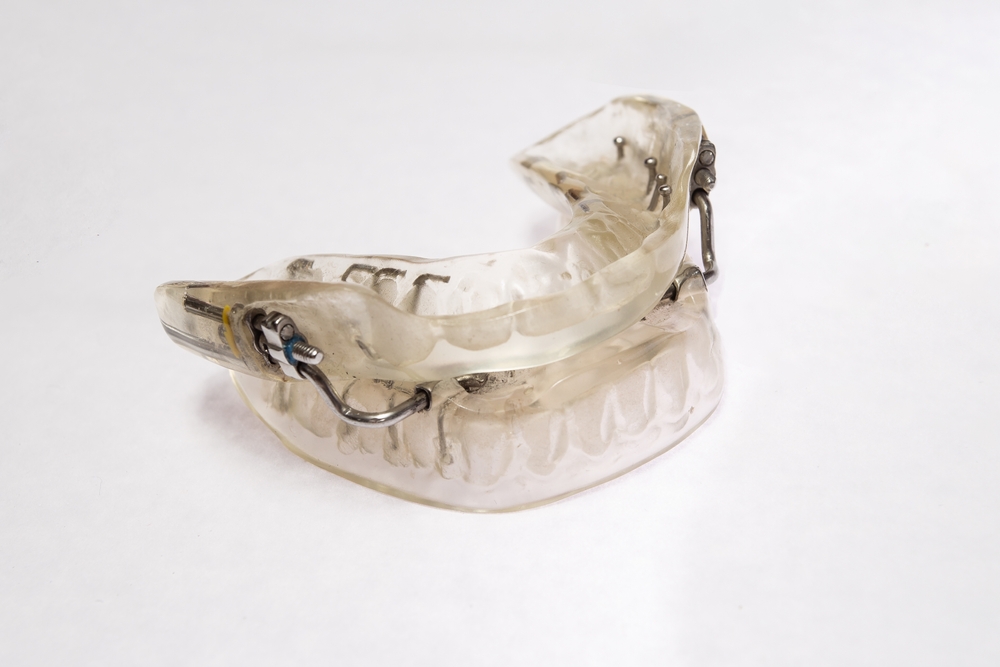Surgery for obstructive sleep apnea involves specialized procedures that may help improve people’s breathing during sleep. In the right candidates, surgery for sleep apnea can improve breathing by creating more space in the airway or by increasing airway stability.
When considering sleep apnea surgery, it may be helpful to learn about each type of surgery, their risks, and how they work to improve nighttime breathing. Knowing a little bit about surgical options may also help you determine what types of questions to ask when you talk with your doctor about possible sleep apnea surgery.
What Is Sleep Apnea Surgery?
Surgery is a treatment option for some, but not all, people with obstructive sleep apnea. Obstructive sleep apnea is a common sleep disorder that happens when tissues of the airway repeatedly collapse during sleep. Sleep apnea surgery works by making the airway larger or by helping the airway to keep its shape during sleep.
Before recommending sleep apnea surgery, doctors often try less invasive ways of improving breathing. For example, a doctor may suggest weight loss, because people who weigh more are at a higher risk of sleep apnea. Doctors may also suggest positive airway pressure (PAP) therapy or oral appliance therapy using a custom-fit mouth guard.
If other treatments are not effective or are too difficult to tolerate, then a doctor may recommend sleep apnea surgery. Sleep apnea surgery can reduce nighttime breathing issues, such as snoring. It can also reduce daytime sleepiness and improve quality of life for people with obstructive sleep apnea. Surgery may be used alone or in combination with other treatments like PAP therapy.
Unlike in adults, where surgery is only used when other treatments don’t work, surgery to remove the tonsils and adenoids is commonly used for treating obstructive sleep apnea in children. The adenoids and tonsils are tissues in the throat that filter out germs. Children often have enlarged adenoids or tonsils that block breathing during sleep and cause sleep apnea.
Types of Surgery for Sleep Apnea
There are many different surgeries for obstructive sleep apnea. There is not a one-size-fits-all approach, because the best sleep apnea surgery depends on an individual’s body as well as the source of any breathing obstructions.
Upper Throat and Mouth Surgeries
The most common source of airway obstructions is the upper portion of the throat. Sleep apnea surgeries address problems in the mouth and upper throat by removing, tightening, or moving tissues at the back of the tongue, the roof of the mouth, or on the side and back of the throat.
- Uvulopalatopharyngoplasty (UPPP)
UPPP is the most common sleep apnea surgery. It decreases or tightens tissue of the palate and throat. There are many variations of UPPP, but the best type depends on an individual’s anatomy. - Removal of the adenoids or tonsils
The adenoids or tonsils may be removed alone or during a UPPP surgery if these tissues interfere with breathing.
Lower Throat and Voice Box Surgeries
Surgery to the voice box and the lower portion of the throat help to address potential blockages in these areas. These surgeries are often performed in conjunction with surgeries of the upper airway and mouth.
- Tongue reduction: Tongue reduction surgery reduces the size of the tongue. Removing tissue from the tongue can help prevent obstructions to breathing that can occur when the back of the tongue slips back during sleep and blocks the airway.
- Lingual tonsillectomy: The lingual tonsils are a part of the immune system located at the back of the tongue. These tissues can sometimes be a cause of sleep apnea, so removing them may improve nighttime breathing.
- Genioglossus advancement: The genioglossus muscles help the tongue move forward and side to side. These muscles are an important target for sleep apnea treatment because they also help keep the airway open. Surgery can shift these muscles forward so the base of the tongue doesn’t block the airway during sleep.
- Epiglottis surgery: Sleep apnea surgery may also target the epiglottis, which is the tissue near the back of the tongue that opens during breathing and closes during swallowing. Epiglottis surgery works by stabilizing this tissue to reduce the chances of it blocking the airway during sleep.
- Lingual frenectomy: This type of surgery removes the lingual frenulum, a band under the tongue that connects the tongue to the bottom of the mouth. It may improve nighttime breathing by giving the tongue a greater range of motion.
Nasal Surgeries
Nasal surgeries for obstructive sleep apnea help to eliminate any blockages in the nose that may impair breathing at night. These procedures are typically used to improve the effectiveness of other treatments, including continuous positive airway pressure (CPAP) therapy, an oral appliance, or another sleep apnea surgery. There are several types of nasal surgeries.
- Turbinate reduction: Nasal turbinates are thin bones located inside the nostrils that can block airflow when they are large or become inflamed. A surgeon can use several procedures to reduce the size of nasal turbinates and clear breathing obstructions.
- Septoplasty: Breathing issues can also be caused by the nasal septum, which is the cartilage and bone in the middle of the nose that separates the nostrils. During the procedure, tissues in the nasal septum may be shifted or removed.
- Nasal valve surgery: The nasal valves are a narrow area in the nose that limits the rate at which air can be inhaled. Surgery may be used to correct abnormalities in the nose that reduce the size of the nasal valves and contribute to breathing issues during sleep.
- Rhinoplasty: Sometimes called a nose job, rhinoplasty is the name for surgeries that fix or change the shape of the nose. Rhinoplasty may be suggested if the shape of a person’s nose contributes to their sleep apnea.
- Endoscopic surgery: Nasal endoscopy is a procedure in which a doctor uses a thin tube to view the inside of the nose. Doctors can use this tool to remove polyps or other tissues that may be causing sleep apnea.
Global Airway Surgeries
Global sleep apnea surgeries don’t target a specific part of the airway. Instead, these procedures address issues in both the upper and lower airway or bypass the airway altogether.
- Maxillomandibular advancement: This procedure shifts the lower jaw and related tissues forward, targeting multiple parts of the airway at the same time. Because this procedure can change a person’s bite, it often requires orthodontics before and after the procedure.
- Maxillary expansion: Surgically assisted rapid maxillary expansion uses various techniques to address an underdeveloped upper jaw, which can affect breathing and contribute to sleep apnea.
- Tracheostomy: Rarely, obstructive sleep apnea becomes severe so that no other treatments are effective. When this happens, a doctor may recommend a tracheostomy as a last resort. A tracheostomy creates an opening in the neck and can be used to bypass an obstructed airway in people with obstructive sleep apnea.
- Hypoglossal nerve stimulation: A nerve stimulation device, commonly referred to as Inspire, can be surgically implanted to improve breathing. This treatment works by using electricity to stimulate a nerve that pushes the tongue forward and shifts muscles in the roof of the mouth to improve airflow through both the upper and lower airway.
Another type of nerve stimulation called phrenic nerve stimulation may be recommended for some people with central sleep apnea. Central sleep apnea is a form of sleep apnea that happens when the brain briefly stops signaling the body to breathe. Phrenic nerve stimulation works by stimulating a nerve that helps chest muscles contract and initiate breathing.

Weight Loss Surgery
Weight loss surgery may be recommended for people with obstructive sleep apnea who are also diagnosed with obesity. Obesity can increase the risk of the airway collapsing during sleep due to the effects of body fat on the size of the airway, lung capacity, and the function of muscles in the throat.
Surgery for weight loss has been shown to significantly reduce nighttime breathing issues in people with a body mass index (BMI) of 40 or higher. There are three main types of weight loss surgery.
- Gastric sleeve: Gastric sleeve surgery involves the removal of most of the stomach tissue. The small amount of remaining tissue is closed with staples, reducing the amount of food that can be eaten before becoming full.
- Gastric bypass: Instead of removing part of the stomach, gastric bypass surgery makes the stomach smaller by using staples to create a small pouch at the top of the stomach. At the same time, portions of the intestines are moved to reduce the amount of calories that can be absorbed from foods.
- Adjustable gastric band: In adjustable gastric band surgery, a ring is placed around the stomach to reduce its size. This ring includes an adjustable band that can be filled with saline to change the size of the ring’s opening.
Potential Side Effects of Sleep Apnea Surgery
Although sleep apnea surgery is often helpful in reducing symptoms and complications of obstructive sleep apnea, these procedures can have certain risks and side effects. The type of side effects and how often they occur depend on the type and extent of surgery. Potential side effects of sleep apnea surgery include:
- Pain
- Swelling
- Infection
- Difficulty swallowing
- Nose bleeds or congestion
- Changes in taste
- Paralysis of the tongue
Weight loss surgery can improve weight loss and reduce the risk of complications from obesity, including sleep apnea. When considering weight loss surgery, it’s important to be aware of potential side effects, including:
- Bleeding
- Infection
- Diarrhea
- Blood clots
- Problems absorbing nutrients
Another risk of sleep apnea surgery is the potential need for multiple procedures. Several surgical procedures may be performed during the same visit, or doctors may recommend a multistage approach in which surgeries are performed consecutively at multiple visits.
Seeing a Doctor About Sleep Apnea Surgery
Your primary care doctor or sleep specialist can answer general questions about sleep apnea surgeries, while an otolaryngologist, also called an ENT doctor, can provide you with more detailed information. Prior to recommending a specific surgery, a doctor or specialist will perform a presurgical evaluation.
During a presurgical evaluation, doctors collect information about a person’s medical history and conduct a physical examination of the head and neck. During this exam, the doctor will look for any issues that could be contributing to nighttime breathing issues. In some cases, a doctor may use endoscopy or specialized imaging tests to find the source of breathing problems.
Candidates for sleep apnea surgery are usually people who have an issue that can be corrected surgically and who are healthy enough to undergo the surgical procedure. Surgery may not be an option for people with other severe medical conditions.
If you’re considering sleep apnea surgery, you may find it helpful to ask questions during your exam, such as:
- Am I a good candidate for sleep apnea surgery?
- What type of surgery is recommended for me?
- How will surgery benefit me?
- What are the potential risks and side effects of sleep apnea surgery?
- How long will it take to recover from surgery and what should I expect during the recovery process?
- Will I need other sleep apnea treatments after surgery?
By asking these questions, you can learn more about what to expect from sleep apnea surgeries. In turn, this may help you and your doctor decide on the best treatment plan for you.
Still have questions?
Sleep apnea products can be confusing. If you need individualized assistance, send us an email at [email protected] with your questions and we'll help find the best fit for you.








